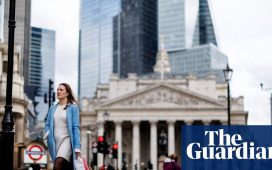Fears of a US recession have gripped global markets, triggering a share market rout that prompted investors across Asia, Europe and North America to all unwind their positions – at the same time.
The severe plunge has raised questions over whether investors are facing a historic share market crash – similar to the global financial crisis or 1987’s Black Monday – or if it’s simply an overdue pull-back after a stellar period of strong returns.
What caused the market meltdown?
The volatile conditions erupted after the US Federal Reserve hinted after its 31 July meeting that interest rates would soon be cut, in what was initially seen as a stimulus for shares.
But the gains quickly evaporated as investors reinterpreted the impending rate cuts as a sign the world’s biggest economy was faltering.
Several pieces of economic data, including manufacturing, durable goods and – crucially – jobs and payroll data, raised questions over the health of the US economy, with the well-regarded “Sahm Rule” signalling a recession. This indicator, which is triggered when there is a rapid rise in the unemployment rate, has correctly identified every recession since the second world war.
AMP chief economist Shane Oliver said “recession fears are now back with a vengeance, particularly in the US”.
Nick Healy, a Sydney-based portfolio manager at Wilson Asset Management, said that the US data proved to be softer than expectations, triggering a strong market reaction.
“It’s fair to classify it as an unwinding of positioning but my view is that it’s hard to extrapolate too strongly into the future from one month of economic data,” said Healy.
After a weekend break to digest the news, a rout took hold in Asian markets on Monday and swept through European and American markets later in the day.
Wall Street’s gauge of fear, the CBOE Volatility Index, shot up above 65; levels not recorded since the pandemic, and reminiscent of the GFC, before settling.
The S&P 500 lost 3% on Monday, while the tech-focused Nasdaq shed 3.43%. While both figures were remarkable, they were more modest than what the futures market initially pointed to, providing some relief to traders and raising hopes the sell off wouldn’t turn into a full blown meltdown.
Even after the losses, the benchmark S&P 500 index is still up more than 9% since January, as is the Nasdaq.
What was hit hardest?
Shares, stock markets and indices that had risen the most tended to fall the furthest.
Chip maker Nvidia, which has led a period of robust returns for the tech sector, was down by as much as 15% at one point on Monday, before halving its losses, while bitcoin also fell sharply.
Australia’s share market suffered its worst day since the onset of the pandemic, erasing more than $100bn in value from local stocks in a single trading session.
But it was Japan’s Nikkei which came under the most extreme pressure, plunging by 12% on Monday before rebounding strongly early on Tuesday.
Investors have been concerned about the state of the Japanese economy and the recent effects of a strengthening yen, which has unravelled the so-called “carry trade”, in which investors borrow cheaply in yen and buy higher-yielding assets including the US dollar.
Analysts had warned that the yen carry trade was unwinding, triggering margin calls and forced selling.
Online trading firm IG said that it suspected the frenzied market action in Japan was the “final act of cleansing of long positions in the Japan trade”, referring to investors who were caught up in the yen-carry trade.
Some safe haven assets, such as bonds, proved to be among the few hiding spots from the turmoil, with the sharp moves challenging all the sure bets of recent months.
That upbeat sentiment had been underpinned by optimism about AI technologies and the wider tech sector, along with expectations inflation would cool, job markets remain robust and economies emerge from the inflationary period intact.
What happens next?
While it’s too early to tell whether the selling pressure will abate, at the very least the sharp falls are a warning shot.
The global recession concerns of recent years have been tied to a fear that cost-of-living pressures will eventually depress spending to such an extent that economies will shift into reverse.
One “canary in the coalmine” investors look to is American online furniture and home goods company Wayfair, which warned on Thursday that customers were very cautious after recording a near 25% fall from peak spending levels recorded three years ago
“This mirrors the magnitude of the peak-to-trough correction the home furnishing space experienced during the great financial crisis,” Wayfair chief executive Niraj Shah said on the earnings call.
While those discretionary spending figures support a case for an ensuing bear market, investors also have an eye on the upcoming US election and associated spending initiatives, which could act as another stimulus for shares.
“There is a situation where both candidates and both parties are very happy to spend money which should keep fiscal dollars going into the economy,” said Healy.








